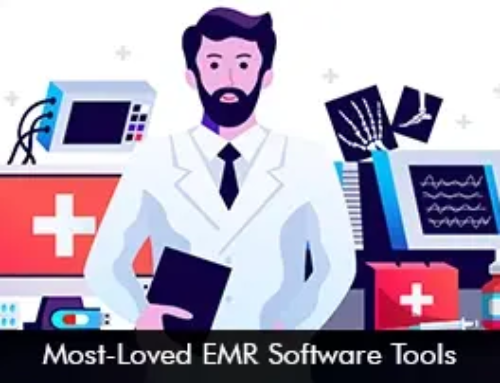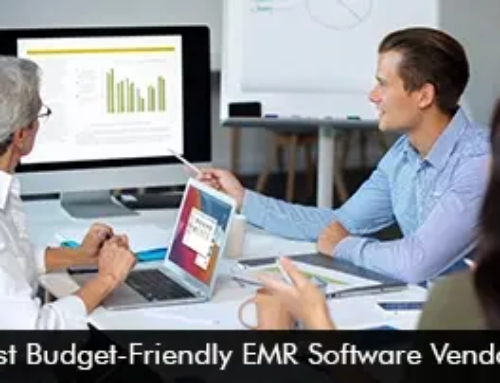The global economy is facing a recession, and the healthcare sector is no exception—hospitals, clinics, and private practices are grappling with rising operational costs, staffing shortages, and reduced patient volumes due to economic downturns. One of the most effective tools for achieving these goals is EMR Software. By digitizing patient records, streamlining workflows, and enhancing data-driven decision-making, EMR Software helps healthcare organizations remain economically resilient even during recessions.
In this blog, we’ll explore how EMR (Electronic Medical Records) Software enables healthcare providers to maximize efficiency, reduce costs, and achieve a higher return on investment (ROI) despite economic challenges.
How EMR Software Enhances Economic Efficiency in Healthcare
1. Reducing Administrative Costs with EMR Software
One of the biggest financial burdens in healthcare is administrative overhead. Manual paperwork, filing systems, and redundant data entry consume valuable time and resources.
-
Automated Documentation: EMR Software eliminates the need for physical records, reducing costs associated with paper, printing, and storage.
-
Streamlined Billing & Coding: Automated coding reduces errors and accelerates claims processing, minimizing revenue loss due to denied claims.
-
Reduced Staff Workload: By automating repetitive tasks, staff can focus on patient care rather than administrative duties, improving productivity.
2. EMR Software Improving Revenue Cycle Management (RCM)
Cash flow is critical during economic downturns, and delays in reimbursements can strain healthcare budgets.
-
Faster Claims Processing: EMR integrates with billing systems to submit claims electronically, reducing delays.
-
Reduced Denials & Rejections: Built-in error-checking ensures accurate coding, decreasing claim denials.
-
Real-Time Financial Analytics: Providers can track revenue trends and identify bottlenecks in the billing process.
3. Enhancing Operational Efficiency & Productivity
Economic uncertainty demands that healthcare facilities do more with fewer resources. EMR Software optimizes workflows to maximize efficiency.
-
Centralized Patient Data: Instant access to medical histories reduces duplication of tests and unnecessary procedures.
-
Telehealth Integration: Virtual care options reduce overhead costs while maintaining patient engagement.
-
Task Automation: Appointment reminders, prescription renewals, and lab result notifications reduce manual follow-ups.
4. EMR Software Reducing Medical Errors & Liability Costs
Mistakes in patient care lead to costly legal consequences and compromised patient trust.
-
Clinical Decision Support: EMR Software provides alerts for drug interactions, allergies, and best practices, reducing errors.
-
Accurate Record-Keeping: Digital records minimize misinterpretation of handwritten notes.
-
Compliance & Audit Readiness: Automated compliance tracking ensures adherence to regulations, avoiding penalties.
5. Data-Driven Decision Making for Cost Savings
In a recession, every financial decision matters. EMR offers analytics to identify cost-saving opportunities.
-
Resource Utilization Reports: Identify underused equipment or overstaffed departments.
-
Population Health Management: Predictive analytics help in preventive care, reducing expensive emergency visits.
-
Benchmarking Performance: Compare financial and operational metrics against industry standards.
Long-Term Financial Benefits of EMR Software
While the initial investment in EMR Software may seem significant, the long-term financial benefits far outweigh the costs, especially during economic instability.
1. Higher ROI Through Improved Efficiency
-
Reduced labor costs due to automation
-
Faster reimbursements and fewer billing errors
-
Lower overhead from paperless operations
2. Competitive Advantage in a Struggling Economy
-
Patients prefer digitally advanced providers
-
Better care coordination attracts more referrals
-
Scalability to adapt to changing patient volumes
3. EMR Software Future-Proofing Healthcare Practices
-
Cloud-based EMR ensures accessibility and disaster recovery
-
Regular updates keep providers compliant with evolving regulations
-
Interoperability with other systems enhances collaboration and reduces IT costs
EMR Software as a Financial Lifeline in Uncertain Times
Economic uncertainty presents significant challenges for healthcare providers, but EMR Software offers a powerful solution to maintain financial stability. By reducing administrative burdens, optimizing revenue cycles, minimizing errors, and enabling data-driven decisions, EMRs help hospitals and clinics operate more efficiently, even during recessions.
Investing in EMR isn’t just about digitizing records; it’s about securing a sustainable future for healthcare organizations. As economic pressures continue, providers who leverage technology will be better positioned to thrive while delivering high-quality patient care.
Is your practice ready to embrace the financial benefits of EMR Software? The time to act is now.








